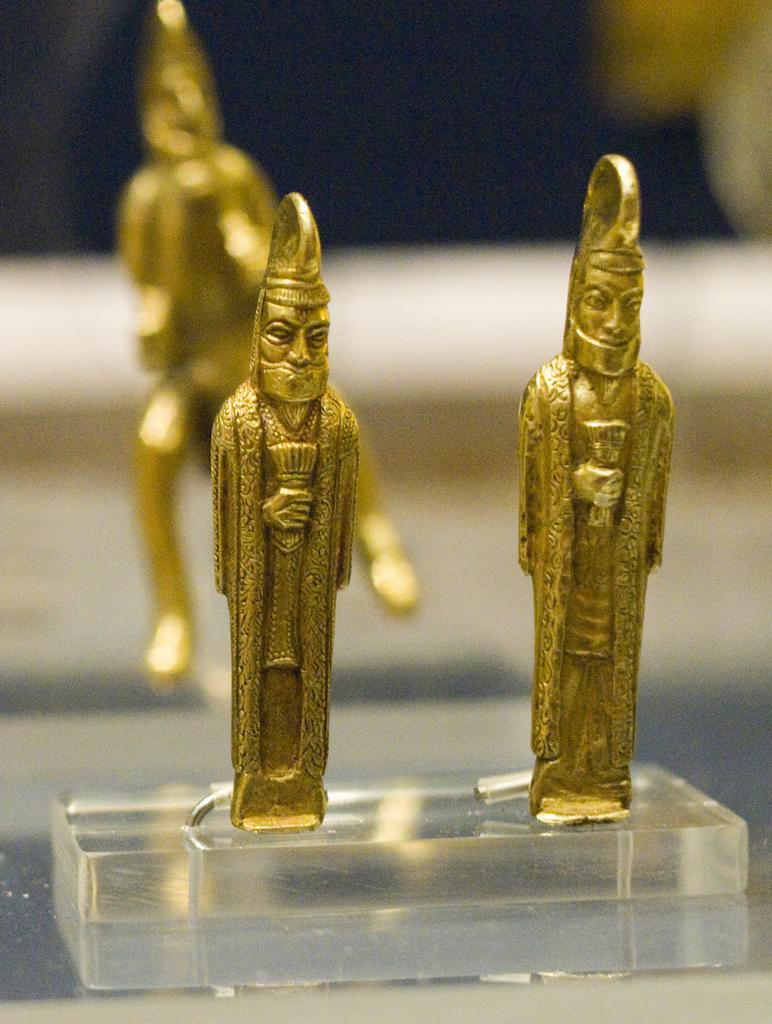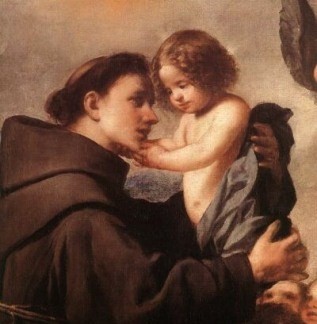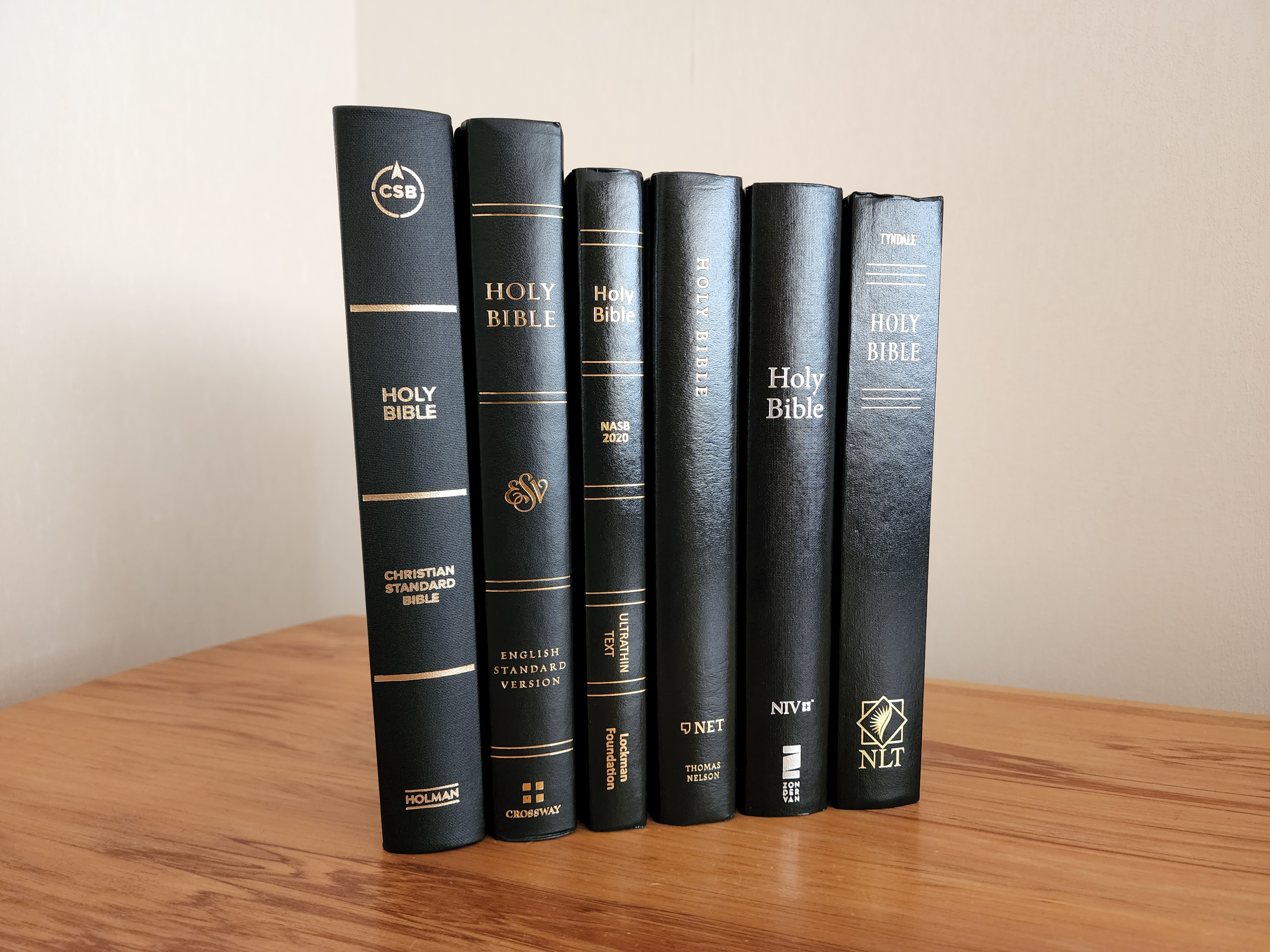|
Three Kings
In Christianity, the Biblical Magi ( or ; singular: ), also known as the Three Wise Men, Three Kings, and Three Magi, are distinguished foreigners who visit Jesus after his birth, bearing gifts of gold, frankincense, and myrrh in homage to him. In Western Christianity, they are commemorated on the feast day of Epiphany (holiday), Epiphany—sometimes called "Three Kings Day"—and commonly appear in the Nativity of Jesus, nativity celebrations of Christmas. In Eastern Christianity, they are commemorated on Christmas day. The Magi appear solely in the Gospel of Matthew, which states that they came "from the east" () to worship the "one who has been born king of the Jews". Their names, origins, appearances, and exact number are unmentioned and derive from the inferences or traditions of later Christians. In Western Christianity and Eastern Orthodox Christianity, they are usually assumed to have been three in number, corresponding with each gift; in Syriac Christianity, they ofte ... [...More Info...] [...Related Items...] OR: [Wikipedia] [Google] [Baidu] |
Magi (1)
Magi (), or magus (), is the term for priests in Zoroastrianism and earlier Iranian religions. The earliest known use of the word ''magi'' is in the trilingual inscription written by Darius the Great, known as the Behistun Inscription. Old Persian texts, predating the Hellenistic period, refer to a magus as a Zurvanism, Zurvanic, and presumably Zoroastrian, priest. Pervasive throughout the Eastern Mediterranean and West Asia until late antiquity and beyond, ''mágos'' (μάγος) was influenced by (and eventually displaced) Greek ''The Lesser Key of Solomon#Ars Goetia, goēs'' (γόης), the older word for a practitioner of magic (paranormal), magic, with a meaning expanded to include astronomy, astrology, alchemy, and other forms of esoteric knowledge. This association was in turn the product of the Hellenistic fascination for Pseudo-Zoroaster, who was perceived by the Greeks to be the Chaldean founder of the Magi and inventor of both astrology and magic, a meaning that stil ... [...More Info...] [...Related Items...] OR: [Wikipedia] [Google] [Baidu] |
Gospel Of Matthew
The Gospel of Matthew is the first book of the New Testament of the Bible and one of the three synoptic Gospels. It tells the story of who the author believes is Israel's messiah (Christ (title), Christ), Jesus, resurrection of Jesus, his resurrection, and his Great Commission, mission to the world. Matthew wishes to emphasize that the Jewish Christianity, Jewish tradition should not be lost in a church that was increasingly becoming gentile. The gospel reflects the struggles and conflicts between the evangelist's community and the other Jews, particularly with its sharp criticism of the scribes, chief priests and Pharisees with the position that the Kingdom of God (Christianity), Kingdom of Heaven has been taken away from them and given instead to the church. Scholars find numerous problems with the traditional attribution to the Matthew the Apostle, Apostle Matthew, though it is possible the gospel incorporates a source written by the disciple. The predominant scholarly view ... [...More Info...] [...Related Items...] OR: [Wikipedia] [Google] [Baidu] |
Infant Jesus
The Christ Child—also known as Baby Jesus, Infant Jesus, Child Jesus, Divine Child, Divine Infant and the Holy Child—refers to Jesus Christ during his early years. The term refers to a period of Jesus' life, described in the canonical Gospels, encompassing his nativity in Bethlehem, the visit of the Magi, and his presentation at the Temple in Jerusalem. It also includes his childhood, culminating in the event where his parents find him in the Temple at age 12, after which the Gospels remain silent about his life until the start of his ministry. Liturgical feasts Liturgical feasts relating to Christ's infancy and childhood include: * The Feast of the Nativity of Jesus Christ (25 December) * The Feast of the Circumcision of Christ (1 January – Eastern Orthodox Church, Extraordinary form of the Roman Rite, Anglican calendars) * The Feast of the Holy Name of Jesus (3 January – Roman Rite; others – various) * The Feast of the Epiphany (6 January or 19 January in ... [...More Info...] [...Related Items...] OR: [Wikipedia] [Google] [Baidu] |
Nativity Scene
In the Christian tradition, a nativity scene (also known as a manger scene, crib, crèche ( or ), or in Italian ''presepio'' or ''presepe'', or Bethlehem) is the special exhibition, particularly during the Christmastide, Christmas season, of art objects representing the nativity of Jesus, birth of Jesus.Berliner, R. ''The Origins of the Creche''. Gazette des Beaux-Arts, 30 (1946), p. 251. While the term "nativity scene" may be used of any representation of the very common subject of the Nativity of Jesus in art, it has a more specialized sense referring to seasonal displays, in particular sets of individual sculptural figures and props that are arranged for display. Other characters from the nativity story, such as shepherds, sheep, and angels may be displayed near the manger in a barn (building), barn (or cave) intended to accommodate farm animals, as described in the Gospel of Luke. A donkey and an ox are typically depicted in the scene, and the Biblical Magi#, Magi and their ... [...More Info...] [...Related Items...] OR: [Wikipedia] [Google] [Baidu] |
Biblical Magi Stained Glass Window, Ca
The Bible is a collection of religious texts that are central to Christianity and Judaism, and esteemed in other Abrahamic religions such as Islam. The Bible is an anthology (a compilation of texts of a variety of forms) originally written in Hebrew, Aramaic, and Koine Greek. The texts include instructions, stories, poetry, prophecies, and other genres. The collection of materials accepted as part of the Bible by a particular religious tradition or community is called a biblical canon. Believers generally consider it to be a product of divine inspiration, but the way they understand what that means and interpret the text varies. The religious texts were compiled by different religious communities into various official collections. The earliest contained the first five books of the Bible, called the Torah in Hebrew and the Pentateuch (meaning 'five books') in Greek. The second-oldest part was a collection of narrative histories and prophecies (the Nevi'im). The third coll ... [...More Info...] [...Related Items...] OR: [Wikipedia] [Google] [Baidu] |
Marcus Borg
Marcus Joel Borg (March 11, 1942 – January 21, 2015) was an American New Testament scholar and theologian. He was among the most widely known and influential voices in Liberal Christianity. Borg was a fellow of the Jesus Seminar and a major figure in historical Jesus scholarship.Marcus Borg Explore Faith. Accessed January 21, 2008. He retired as Hundere Distinguished Professor of Religion and Culture at in 2007. He died eight years later at the age of 72, of idiopathic pulmonary fibrosis at his home in [...More Info...] [...Related Items...] OR: [Wikipedia] [Google] [Baidu] |
Legend
A legend is a genre of folklore that consists of a narrative featuring human actions, believed or perceived to have taken place in human history. Narratives in this genre may demonstrate human values, and possess certain qualities that give the tale verisimilitude (literature), verisimilitude. Legend, for its active and passive participants, may include miracles. Legends may be transformed over time to keep them fresh and vital. Many legends operate within the realm of uncertainty, never being entirely believed by the participants, but also never being resolutely doubted. Legends are sometimes distinguished from myths in that they concern human beings as the main characters and do not necessarily have supernatural origins, and sometimes in that they have some sort of historical basis whereas myths generally do not. The Brothers Grimm defined ''legend'' as "Folklore, folktale historically grounded". A by-product of the "concern with human beings" is the long list of legendary crea ... [...More Info...] [...Related Items...] OR: [Wikipedia] [Google] [Baidu] |
Christian Tradition
Christian tradition is a collection of traditions consisting of practices or beliefs associated with Christianity. Many churches have traditional practices, such as particular patterns of worship or rites, that developed over time. Deviations from such patterns are sometimes considered unacceptable by followers, or are regarded as heretical. There are certain Christian traditions that are practiced throughout the liturgical year, such as praying a daily devotional during Advent, erecting a nativity scene during Christmastide, chalking the door on Epiphany Day, fasting during Lent, waving palms on Palm Sunday, eating easter eggs during Eastertide, and decorating the church in red on Pentecost. Tradition also includes historic teaching of the recognized church authorities, such as Church Councils and ecclesiastical officials (e.g., the Pope, Patriarch of Constantinople, Archbishop of Canterbury, etc.), and includes the teaching of significant individuals like the Church Fathers, ... [...More Info...] [...Related Items...] OR: [Wikipedia] [Google] [Baidu] |
Messiah In Judaism
The Messiah in Judaism () is a savior and liberator figure in Jewish eschatology who is believed to be the future redeemer of the Jews. The concept of messianism originated in Judaism, and in the Hebrew Bible a messiah is a king or High Priest of Israel traditionally anointed with holy anointing oil. However, messiahs were not exclusively Jewish, as the Hebrew Bible refers to Cyrus the Great, an Achaemenid emperor, as a messiah for his decree to rebuild the Jerusalem Temple. In Jewish eschatology, the Messiah is a future Jewish king from the Davidic line, who is expected to be anointed with holy anointing oil and rule the Jewish people during the Messianic Age and world to come. The Messiah is often referred to as "King Messiah" (, ). Jewish messianism gave birth to Christianity, which started as a Second Temple period messianic Jewish religious movement. Etymology In Jewish eschatology, the term Messiah refers specifically to a future Jewish king from the Davidic line, ... [...More Info...] [...Related Items...] OR: [Wikipedia] [Google] [Baidu] |
Old Testament Prophecies
Bible prophecy or biblical prophecy comprises the passages of the Bible that are claimed to reflect communications from God to humans through prophets. Jews and Christians usually consider the biblical prophets to have received revelations from God. Prophetic passagesinspirations, interpretations, admonitions or predictionsappear widely distributed throughout Biblical narratives. Some future-looking prophecies in the Bible are conditional, with the conditions either implicitly assumed or explicitly stated. See "History Unveiling Prophecy," by H. Grattan Guinness, 1905, pages 360-375. In general, believers in biblical prophecy engage in exegesis and hermeneutics of scriptures which they believe contain descriptions of global politics, natural disasters, the future of the nation of Israel, the coming of a Messiah and of a Messianic Kingdom—as well as the ultimate destiny of humankind. Overview Prophets in the Bible often warn the Israelites to repent of their sins and ido ... [...More Info...] [...Related Items...] OR: [Wikipedia] [Google] [Baidu] |
Astrology
Astrology is a range of Divination, divinatory practices, recognized as pseudoscientific since the 18th century, that propose that information about human affairs and terrestrial events may be discerned by studying the apparent positions of Celestial objects in astrology, celestial objects. Different cultures have employed forms of astrology since at least the 2nd millennium BCE, these practices having originated in Calendrical calculation, calendrical systems used to predict seasonal shifts and to interpret celestial cycles as signs of divine communications. Most, if not all, cultures have attached importance to what they observed in the sky, and some—such as the Hindu astrology, Hindus, Chinese astrology, Chinese, and the Maya civilization, Maya—developed elaborate systems for predicting terrestrial events from celestial observations. Western astrology, one of the oldest astrological systems still in use, can trace its roots to 19th–17th century BCE Mesopotamia, fr ... [...More Info...] [...Related Items...] OR: [Wikipedia] [Google] [Baidu] |
Bible Translations
The Christian Bible has been translated into many languages from the biblical languages of Hebrew, Aramaic, and Greek. the whole Bible has been translated into 756 languages, the New Testament has been translated into an additional 1,726 languages, and smaller portions of the Bible have been translated into 1,274 other languages. Thus, at least some portions of the Bible have been translated into 3,756 languages. Textual variants in the New Testament include errors, omissions, additions, changes, and alternate translations. In some cases, different translations have been used as evidence for or have been motivated by doctrinal differences. Original text Hebrew Bible The Hebrew Bible was mainly written in Biblical Hebrew, with some portions (notably in Daniel and Ezra) in Biblical Aramaic. Some of the Deuterocanonical books not accepted in every denomination's canons, such as 2 Maccabees, originated in Koine Greek. In the third and second centuries B.C.E., the Hebr ... [...More Info...] [...Related Items...] OR: [Wikipedia] [Google] [Baidu] |








